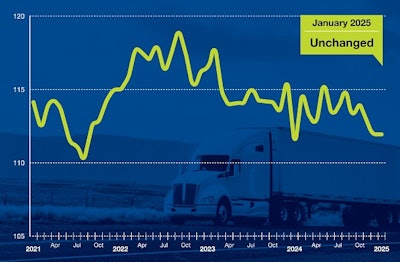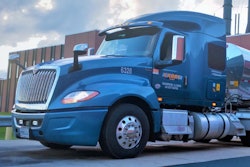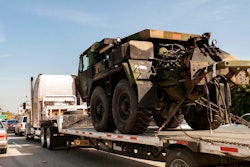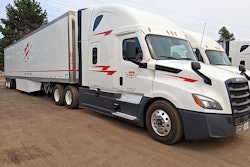Trucking news and briefs for Wednesday, Feb. 19, 2025:
A. Duie Pyle, Dayton Freight Lines expand partnership
A. Duie Pyle (CCJ Top 250, No. 59) and Dayton Freight Lines (No. 48) on Tuesday announced plans to expand their existing partnerships and, in turn, their respective geographic footprints.
For Pyle, the company’s network will now stretch West, bringing direct next-day service to the entire state of Ohio. For Dayton, this means a step East, expanding their direct next-day service deeper into the state of Pennsylvania.
With this strategic state overlap, Pyle and Dayton will offer additional next-day lanes to their respective customers. In lanes where these changes enable the two companies to upgrade from a two-day service to overnight delivery, it reinforces their commitment to providing the fastest and most reliable transit times in the market, they said.
The two companies have worked side-by-side to service customers since 2003, exchanging shipments at Pyle’s Streetsboro, Ohio, service center and Dayton’s Cleveland, Ohio, facility. The operational arrangement has been successful for years and has allowed for both companies to offer two-day shipping across the Midwest and Northeast.
With the announcement of this initiative and the expansion of their LTL partnership, the two companies are now looking forward to achieving new milestones and further growing their collaboration.
Truck tonnage unchanged from December to January
Trucking activity in the United States was unchanged in January, despite a myriad of factors that depressed freight volumes around the country, according to the American Trucking Associations’ advanced seasonally adjusted For-Hire Truck Tonnage Index.
“After declines in November and December totaling 1.7%, tonnage was unchanged in January” said ATA Chief Economist Bob Costello. “This outcome is impressive considering the massive winter storm that brought cold temperatures and significant snowfalls to large parts of the country, including those that rarely see such storms. Furthermore, the terrible wildfires in California likely also caused freight disruptions.”
 After declining in November and December, ATA's Truck Tonnage Index was unchanged in January.American Trucking Associations
After declining in November and December, ATA's Truck Tonnage Index was unchanged in January.American Trucking Associations
Costello added that softness in other areas, including manufacturing and retail sales, “continue to be a drag on truck freight volumes as well, so the fact tonnage was flat is a positive sign.”
In January, the ATA advanced seasonally adjusted For-Hire Truck Tonnage Index equaled 111.9 -- the same as December. The index, which is based on 2015 as 100, was up 0.3% from the same month last year, the first year-over-year increase since August.
The not seasonally adjusted index, which calculates raw changes in tonnage hauled, equaled 110 in January, 1.1% above December’s reading of 108.9.
Trucking conditions remained positive to close 2024
Trucking market conditions declined from November to December, according to FTR’s Trucking Conditions Index (TCI), but the index remained in positive territory with a reading of 2.67.
The decrease from November’s 3.02 reading was minimal, but FTR noted that the underlying factors changed substantially. Freight rates in December were considerably more unfavorable for carriers than they were in November, but the contributions from freight volume and capacity utilization were much improved.
While FTR’s forecast for trucking conditions envisions near-term weakness due to fuel prices and freight rates, the firm expects the TCI to be consistently positive by Q2. “Preliminary data suggests that market conditions were tough for carriers in January, but we still forecast consistently favorable market conditions for carriers to begin soon,” said Avery Vise, FTR’s vice president of trucking. “Freight rates have been sluggish, however, so the risk of a slower recovery than currently forecast is significant.”
Vise added that economic data volatility as a result of “tariff expectations and response from businesses and consumers injects further uncertainty into the outlook.”
Even still, FTR is “confident in modestly stronger conditions for trucking companies at least by the second half of the year.”













